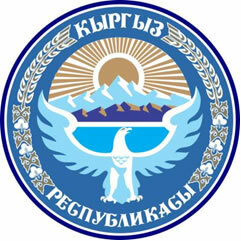Located in the central portion of the Asian continent, Kyrgyzstan has no access to the sea and borders China (to the east), Kazakhstan (to the north), Uzbekistan (to the west) and Tajikistan (to the south). The Tian Shan mountain range occupies more than 90% of the national territory.
In 1875, the country was fully occupied by the Russian empire. With the creation of the Union of Soviet Socialist Republics (USSR) in 1917, Kyrgyzstan became one of the member nations of this great country. Independence was achieved in August 1991, a consequence of the break-up of the Soviet Union.
With the achievement of political autonomy, the country began to carry out economic relations with the United States (the main enemy of the former USSR). Because of its strategic geographic position, Kyrgyzstan is disputed by Russia and the United States, being the only nation in the world to host military troops from these two countries.
The economy is based on agricultural activities. The Fergana valley, located in the southern portion, has a large fertile area, where potatoes, beetroot, fruits and vegetables are grown. This sector of the economy is responsible for employing more than half of the country's workforce. The industrial sector is underdeveloped, operating in the following segments: textile, food, wood and steel.
Kyrgyzstan has a high infant mortality rate: 36 deaths per thousand live births. Several inhabitants live below the poverty line, on less than $1.25 a day. The country also faces conflicts between ethnic groups, particularly involving Uzbeks and Kyrgyz.
Do not stop now... There's more after the advertising ;)

Kyrgyzstan Coat of Arms
Kyrgyzstan Data:
Territorial extension: 198,500 km².
Location: Asia.
Capital: Bishkek.
Climate: Temperate continental.
Government: Republic with mixed form of government.
Administrative division: 7 regions and the capital (Bshkek).
Languages: Kyrgyz (official), Russian.
Religions: Islam 65.1%, no religion 21.6%, Christianity 6.5% (Orthodox 4.5%, other 2%), atheism 5.8%, other 1%.
Population: 5,482,200 inhabitants. (Men: 2,704,978; Women: 2,777,222).
Composition: Kyrgyz 52%, Russians 22%, Uzbeks 13%, Ukrainians 2.5%, Germans 2.4%, Tatars 1.6%, others 6.5%.
Demographic density: 27.6 inhab/km².
Average annual population growth rate: 1.2%.
Population residing in urban areas: 36.43%.
Population residing in rural areas: 63.57%.
Undernourished population: less than 5%.
Life expectancy at birth: 65.7 years.
Households with access to drinking water: 89%.
Households with access to the health network: 93%.
Human Development Index (HDI): 0598 (average).
Currency: Sound.
Gross Domestic Product (GDP): 4.4 billion dollars.
GDP per capita: $704.
External relations: World Bank, CIS, IMF, WTO, UN.
By Wagner de Cerqueira and Francisco
Graduated in Geography
Brazil School Team
countries - geography - Brazil School



